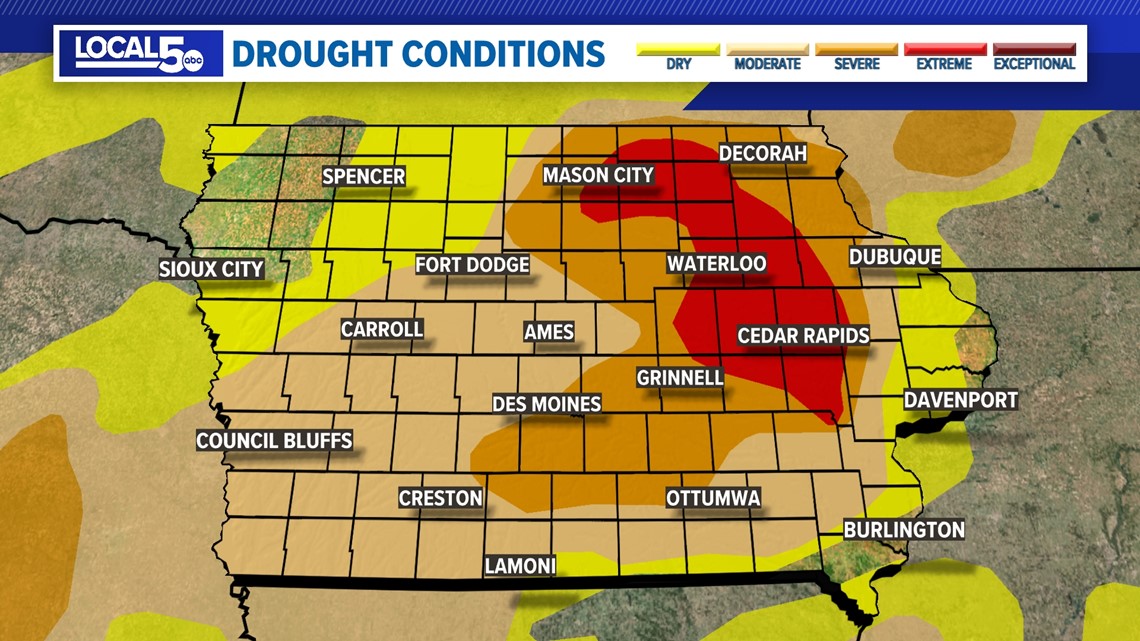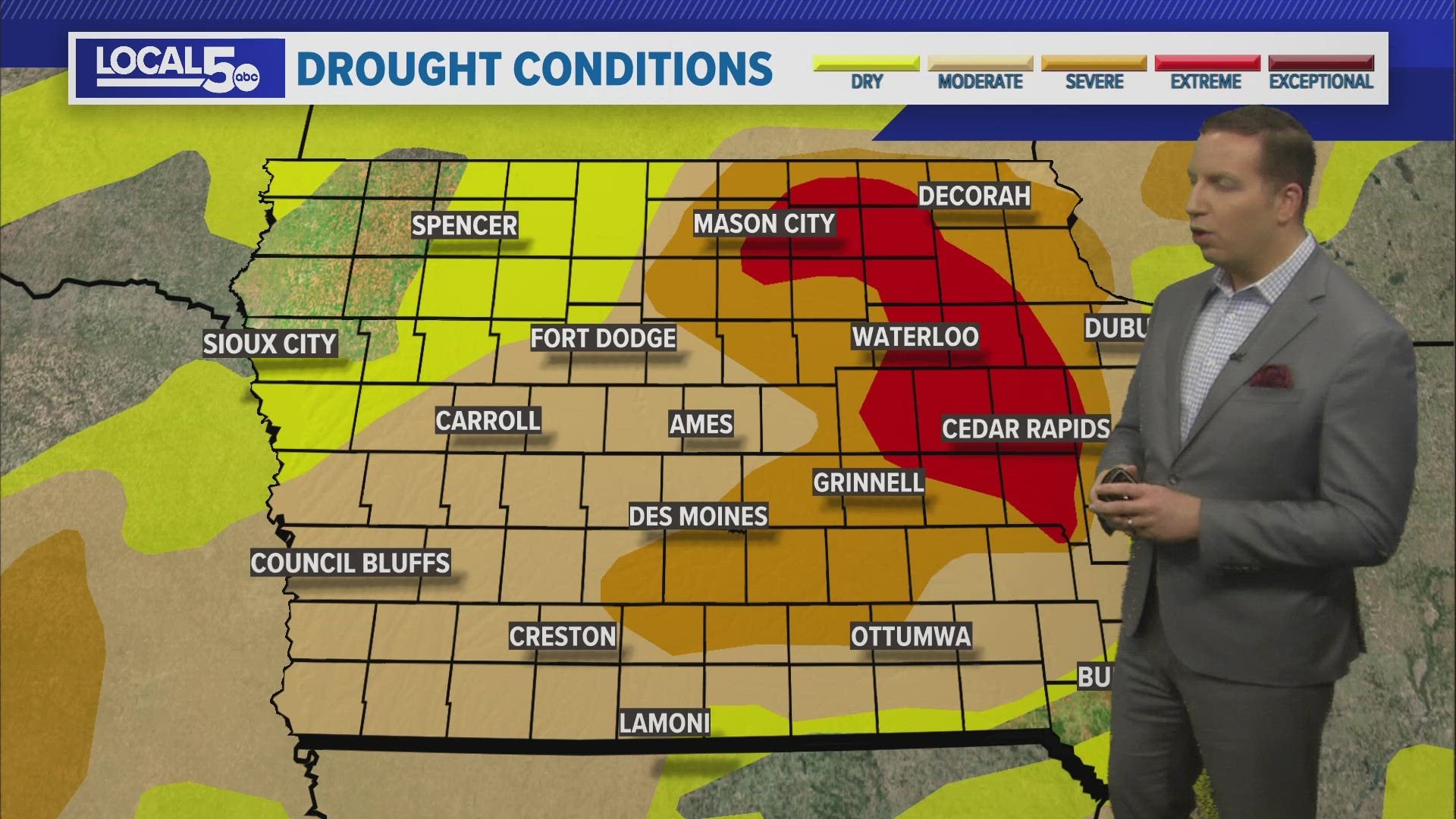DES MOINES, Iowa — Extreme drought covers just 12% of Iowa at the end of March, down from 35% of the state at the start of 2024.
That's a 23% decrease in areas affected by the worst drought conditions.
Severe drought, which had impacted more than half of Iowa just last week, is now down to only 35% of Iowa.
The area of moderate drought is shrinking, too, according to the U.S. Drought Monitor's newest report.
Recent soaking rainfall is the cause. From March 1 to March 26, Des Moines received 2.38" of rain, which is above average for that timeframe.
Since Jan. 1, Des Moines has seen about a half inch of precipitation more than normal.
Other parts of Iowa benefitted from healthy rains as well, especially over the western half of the state.
Communities along and west of I-35 recorded the most noticeable drought improvements, while eastern Iowa, including Cedar Rapids and Waterloo, is still in desperate need of more precipitation.


Although many areas are doing well for precipitation in 2024, the increased moisture does not cancel out significant deficits in 2023.
Thankfully, the current weather pattern favors additional chances for rainfall, including an opportunity arriving around the first day of April.
It would take a substantial amount of precipitation to totally eliminate the drought in Iowa, so the prospect of it altogether going away is low.
Still, climatology favors more improvements in the coming months.
On average, April, May, and June are three of the wettest months of the year, with 'normal' precipitation totals of 4.02", 5.24", and 5.26", respectively.

